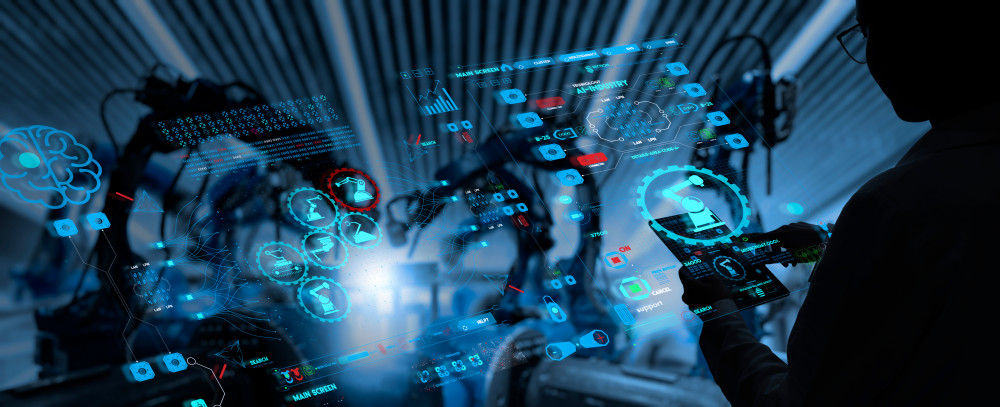
Posted November 28, 2023
By Ray Blanco
Automation Is Shaping The Future
Alongside the rapidly growing and developing artificial intelligence trend is another, closely related trend.
I’m talking about automation and robotics.
One definition of the term “automation” is the “automatically controlled operation of an apparatus, process or system by mechanical or electronic devices that take the place of human labor.”
Automation is something we’ve been doing for at least as long as the first Industrial Revolution. In fact, without increasingly sophisticated automation — originally to replace muscle power and later moving on to taking on processes that originally would have required human eyes and hands — there would have never been the productivity and wealth gains we associate with industrial revolutions.
And it's something we’ve been refining ever since.
In fact, as technology has improved, everything that has been possible to automate has been automated, and as technology improves further, we will be able to automate more.
With the latest technology, the long-term automation trend is entering a new phase.
Growth is being enabled by exponential improvement in the intelligence of the products produced by our semiconductor and software companies.
AI is one of those factors contributing to the rapid growth of automation possibilities.
And even though the space is full of exciting developments and advancements, some are skeptical.
It’s an age-old story: a robot is going to take your job one day. But the entire automation movement is much more complicated with many more moving parts than a simple sentence can account for.
Of course, the growth of this industry will carry dramatic changes to the job market in several ways.
Naturally, some jobs will likely be replaced by robots, but others will also be created as a result of these technological advancements.
In order to understand the impact of automation and robotics on the job market, we can break down some of the effects that will come with this new tech.
Breaking Down the Bots
Perhaps the biggest benefit of automation is the increase in productivity potential... Automated systems can perform repetitive tasks much faster and more accurately than humans.
While this will ‘replace’ some jobs, it will also free up workers from busy work so that they can focus on more complex tasks that require innate human skills such as creativity, critical thinking, and problem-solving.
This would result in higher overall productivity and improved efficiency.
In factories and other dangerous jobs, this type of automation will help to reduce the risk of workplace accidents since many dangerous or physically demanding jobs can be automated, which will help to keep workers safe and healthy.
Additionally, automation could help to reduce the cost of goods and services, as companies are able to produce more with fewer workers.
Sure enough, the automation boom is one that I expect will accelerate at an even faster pace this decade thanks to factors such as rising wages and labor shortages.
The last two times this has happened over the past 70 years — after World War II and during the 1990s — technology’s share of GDP boomed and technology stocks’ performance relative to the rest of the market soared.
And there’s good reason to expect labor in the U.S. will be tight for the foreseeable future, with the large baby boomer generational cohort retiring at a rapid pace.
Moreover, the relatively recent pressure to reshore the U.S. manufacturing base in light of changing geopolitical conditions adds further pressure on the domestic labor supply.
As in past periods, these factors will pressure firms to automate as much as possible in order to raise productivity and profitability.
Ideally, over the following years, capital owners, workers, and policymakers alike will come to understand the potential impacts of automation and robotics.
Moreover, businesses should take the steps to ensure that workers are able to acquire the skills they need to stay competitive in the job market while also leveraging these technological advancements to progress our world into a better future.
I expect to see many more developments about the future of automation and, in turn, share the most exciting and important ones with you.

